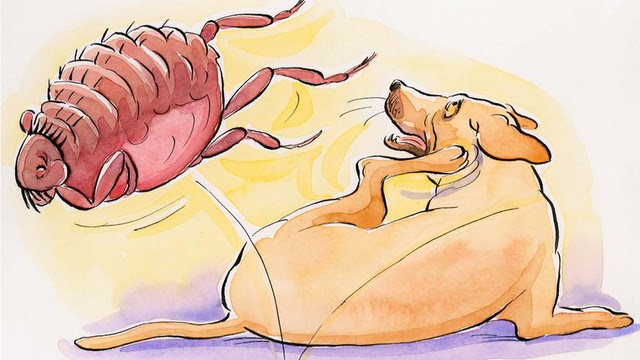Quck answer
Fleas are tiny, wingless insects that feed on the blood of animals and humans. They have powerful hind legs that allow them to jump up to 200 times their body length. Fleas use their sharp mouthparts to pierce the skin of their host and suck blood. They can also transmit diseases such as plague and typhus. Flea infestations are common in pets, and often require treatment with insecticides and thorough cleaning of the environment. Prevention includes regular grooming and use of flea preventative products.
Wild Animals

Fleas are parasites that feed on the blood of other animals, including our pets. These small wingless insects can infest your cats and dogs in various places, such as your backyard, dog parks, and even your bedding and furnishings.
Freeloaders that live on other creatures, fleas survive by consuming blood from their hosts, such as dogs and cats. They can produce millions of offspring during their lifespan, which can range from 13 days up to a year. The most common flea species that affect pets in North America is the cat flea (Ctenocephalides felis).
If your pet keeps scratching, licking, and chewing, you might notice tiny brown insects moving around on their head, abdomen, and tail base. Adults fleas can survive for a couple of months without food, and flea pupae can remain in their cocoons for up to a year, waiting for the presence of nearby hosts. Fleas have many adaptations that make it easy for them to move around on their hosts, feed on blood, reproduce, and survive when food is scarce. In this article, we’ll discuss how these adaptations make it challenging to kill fleas, ways to prevent them from invading your home and pets, and suggestions to eliminate an infestation if it occurs.
FAQ
1. What exactly are fleas?
Fleas are tiny, wingless insects that feed on the blood of mammals and birds. They are usually brown or black in color and have a hard exoskeleton that protects them from being crushed or scratched off.
2. How do fleas move around?
Fleas are known for their incredible jumping ability. They have long, powerful back legs that allow them to jump up to 200 times their body length. This makes it easy for them to move from host to host or from the environment to a host.
3. How do fleas reproduce?
Fleas have a complex life cycle that includes four stages: egg, larva, pupa, and adult. Female fleas lay their eggs on their host or in the environment, such as in carpet fibers or bedding. The eggs hatch into larvae, which feed on organic matter until they spin cocoons and enter the pupal stage. After a few days or weeks, adult fleas emerge from the cocoon and jump onto a host to feed and mate, starting the cycle all over again.
4. Do fleas transmit diseases?
Yes, fleas can transmit diseases to their host. The most well-known disease associated with fleas is the bubonic plague, which is caused by the bacterium Yersinia pestis. Fleas can also transmit tapeworms and other parasitic infections.
5. How can I prevent and treat fleas?
The best way to prevent fleas is to keep your pets and home clean. Regularly vacuuming carpets, washing pet bedding, and grooming your pets can help reduce the risk of a flea infestation. Flea prevention products, such as topical treatments or oral medications, can also be used on pets. If you do have a flea infestation, it’s important to treat both your pets and your home with flea-killing products.





Leave a Reply